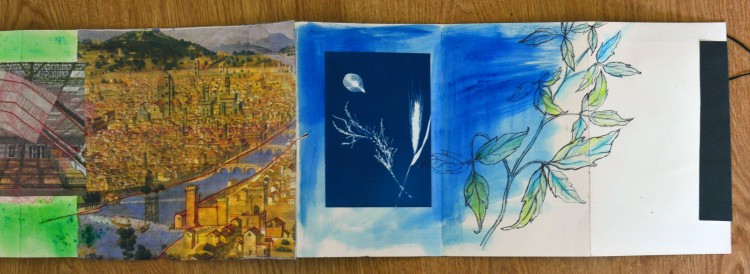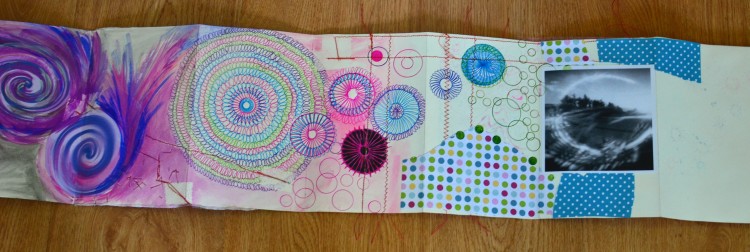This group is called ” The Mostyn Ninja’s” they are a group of young artists aged 11 – 14 , they meet every other week at the gallery. I have been asked to cover the next few sessions, so for the first session I decided to introduce my own practice to them by doing some emulsion transfers.
I had everything planned, I was going to get the kids to do some scanned portraits so I was going to take my own printer and laptop with me & I had the emulsion paint and some watercolour paper. I didn’t want to chance that the brushes available would be hard with old glue and paint so at the last minute I decided to take some paintbrushes with me. I arrived with plenty of to set up, only to find that there was no access to the studio (where equipment and water were) It was changeover week, so the gallery itself was closed, and the shop staff couldn’t let me through due to the shutters being broken.
We held the session in the meeting room, which was fine, it was just a bit inconvenient to have to get water from the public toilets, and I was relieved that I had actually brought everything that I needed for the activity!
We had a bit of a hiccup with my printer not connecting to the WIFI, which meant the scanner wouldn’t work but luckily we were able to use the office printer. The kids really seemed to enjoy the activity, they had fun scanning their faces and enjoyed the mess that they made with the paint.
The kids were great, and towards the end of the session, they all got stuck in helping to clear up the mess.

This was one of my favourite from the day
One thing that I learnt from today was that you really can never be too prepared, and that I should always have a back up activity planned, if we hadn’t been able to use the office printer I would have had to come up with something pretty quickly.

A selection of the work produced at the workshop








































